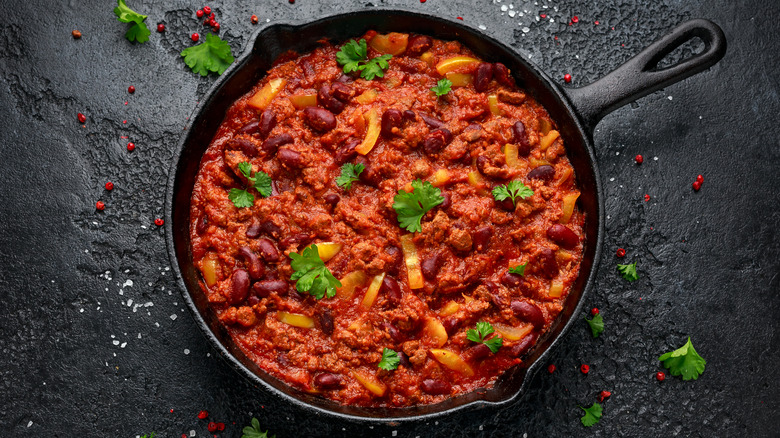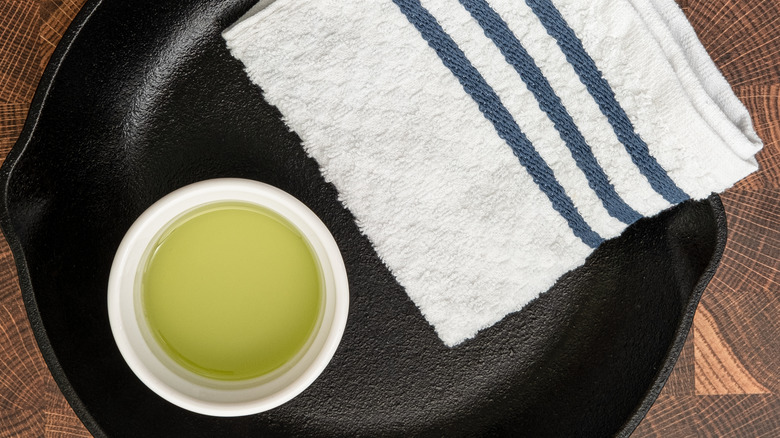You Never Need To Scrub Your Cast Iron Skillets. Here's Why
Cast iron skillets have become a beloved staple in many kitchens. They may be heavy to handle (as Rapunzel knows well), but they're also super-versatile, which makes them one of the kitchen items you definitely need when you move into a new home. Skillets can help produce everything from Dutch baby pancakes to hearty chili; they put just the right sear on steaks and simmer up chicken and vegetables in a snap.
Unlike other pans, cast iron skillets don't scorch or dent easily, and there's no nonstick coating to scratch off and get into the food. In fact, cooking in cast iron actually has the benefit of naturally boosting the iron content of the food, according to a study published by the National Institutes of Health. True, iron skillets can eventually crack, in which case they should be tossed immediately, per Taste of Home. Not only can bacteria grow inside a crack, but the pan will also break apart eventually. But with proper use and care, a cast iron skillet can last for years — or even generations.
When you've dished out the last of your chops or cobbler, you might instinctively reach for a steel-wool scouring pad to get the stuck-on leftover bits of food. However, there are better and easier ways to clean a cast iron skillet.
Seasoning and careful cleaning will keep your cast iron in top shape
Like a fine wine, cast iron skillets get better with time if handled properly. The oil used to cook dishes in the pan gets absorbed into the metal, eventually building up a naturally nonstick surface, per Taste of Home. Vigorous scrubbing or the use of steel wool can ruin that effect, and lengthy exposure to water can make the pan rust, which is why experts recommend against putting cast iron in the dishwasher or soaking it in a sink.
To clean a cast iron pan, it's okay to use a little soap and water, according to All Recipes. Instead of a scouring pad, use a bristle brush to remove any stuck-on food. An even easier method is to pour very hot water into the pan to loosen any particles. Scrape off food bits with a spatula. Dry thoroughly with a towel, or put the pan on a hot burner until all the water has evaporated.
As for seasoning the pan, pour a little vegetable oil into the pan (canola, grapeseed, and flaxseed oil work well, per The Kitchn), and use a paper towel to coat the surface. Use another paper towel to wipe off the excess. You can either put the pan into a hot oven for 10 minutes to make sure the oil has been absorbed, or store it with a paper towel over the surface. Now your pan is ready for your next kitchen masterpiece.

